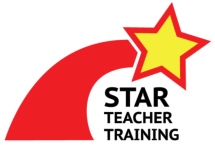I often hear from teachers who haven’t got enough space for their students to move around in class. There’s no room for them to line up, run around, move desks, or even walk around. These teachers say it’s impossible for their kids to be active in class, even though it’s important. The good news is that there are simple EFL activities like Stand Up/Sit Down that will increase your students’ opportunities to move without increasing classroom chaos.
This listening game involves everyone (which is key), is great for kids 4 to 10, and can be adapted for all sorts of levels and topics.
Related: Move Your Students with Kinesthetic Learning and TPR in ESL
How to Play
To play, tell everyone to stand up for yes (or true), and sit down for no (or false).
You then ask closed questions or make true/false statements for the students to respond to. You can use flashcards, picture differences, general knowledge, or another set of information like a timetable.
Students listen and rush to stand up or sit down as fast as they can. You can continue to lead the game for a few minutes and even go faster as students build their confidence.
If a student or two make a mistake don’t worry about it too much. They’ll notice their classmates and self-correct. In simple EFL activities like this you want to give everyone many opportunities to hear the same language repeated so continue the game. Make a mental note to review an idea if many students get something wrong.
Related: Increasing ESL Participation Rates
Here are some examples:
With flashcards

- “Is this a T-Shirt?” (yes/no)
- “It’s a red T-shirt.” (true/false)
With picture differences

- “In picture A, is there a kangaroo on the bed?” (yes/no)
- “There are books on the table in picture B.” (true/false)
With timetables and information sets

- “Do we have English on Wednesday in the morning?” (yes/no)
- “We have math on Tuesday in the morning.” (true/false)
With general knowledge
- Monkeys can fly. (true/false)
- Do pilots work at a police station? (yes/no)
You may also like:
A few final tips…
- No Winners: There doesn’t need to find a winner in many simple EFL activities like this one. A lot of teachers get hung up on finding the best student. They eliminate the slowest and incorrect students. That means more and more kids can’t play, which is really frustrating for them. If the game is fun then your students will play without needing a winner.
- Answer Checker: This works great as a feedback activity to check students’ answers from pair or small group activities with fixed answers.
- Concept Checker: It’s also great for concept checking questions. You can check if students understand new vocabulary in a fun, active way. This is also excellent for seeing if silent students are still learning.
- Prepare Ahead: It helps to prepare some questions ahead of time, especially if you aren’t a fast thinker (like me). The pace needs to be pretty fast to stay engaging. Kids don’t like waiting 10 seconds between each question.
- Get Familiar: It takes younger students a few practice rounds to get used to a game, even simple EFL activities. They also like the game more and more after they’ve played it in a few lessons.
Related: Understanding Silent Students in EFL Classes
What topics have you used this game with? Share your stories below.
Are you looking to upgrade your classroom management skills?

Then check out Star Teacher Training’s full course on Udemy! “EFL-ESL Classroom Management for Ages 6-11” has got more than 6 hours of comprehensive videos on how you can transform your classroom management to get great behavior from your students in a positive, productive way.







Thank you. I’d run out on fresh ideas..
Thanks! What topic did you use the activity for? How did it go?